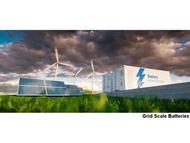Alternative Approaches - ORIGINAL CONTENT
- By:
- Edward A. Reid Jr.
- Posted On:
- Aug 23, 2022 at 7:00 AM
- Category
- Energy Policy, Climate Change
There are fundamentally two approaches to the adoption of new technology. The more common approach has been to introduce and market the product, process, or service embodying the new technology and allow the market to adopt the new technology based on its functional and/or economic advantages. The speed of the adoption process is a function of the relative importance and cost of the equipment or process and/or its relative desirability. The rise of air travel and the decline of rail travel is an example of this approach, as is the growth of air freight relative to rail freight. The rapid growth of package delivery services at the expense of the US. Postal Service is another example, as is the transition from snail-mail to e-mail.
The second approach combines law and/or regulation, government incentives, building codes and other non-market drivers. This approach is used by government to drive the adoption of new technology which is not perceived by the intended customers to offer sufficient functional and/or economic advantages to achieve market acceptance. DOE Appliance Efficiency Standards, DOT Corporate Average Fuel Economy Standards, vehicle emission standards are examples of this approach. In some cases this approach has been used to remove existing technology from the market before the replacement technology is “ready for prime time”, frequently referred to as technology-forcing requirements or standards.
A more aggressive version of the second approach is being pursued to transition the US energy economy from reliance on oil for transportation, natural gas and coal for power generation, natural gas and electricity for residential, commercial space heating, water heating, food preparation and coal, natural gas and electricity for industrial process heating. The federal government has established timelines for the elimination of coal and later natural gas use for electric power generation, and for the elimination of fossil fuel for all other uses.
The government is pursuing a goal of “all-electric everything” by 2050 to achieve net-zero CO2 emissions. In the process, government is forcing the installation of redundant intermittent renewable generation, which displaces a portion of the output of the remaining fossil-fueled generation without replacing that generation capacity, since it is needed to support the grid when the intermittent generation is not functioning or is operating below rated capacity. This addition of redundant capacity increases overall generation investment and thus increases electricity cost, as does the management of the intermittent redundant capacity.
The ”all-electric everything” energy economy would require an electric grid with 3-4 times the capacity of the current grid, and with storage capacity sufficient to replace the conventional generation which currently supports the renewable portion of the generation fleet as well as to provide support for the additional renewable generation serving the greatly expanded “all-electric everything” grid. This approach is technology-forcing, in that the storage technology necessary to replace conventional generation as support for renewable generation is not currently commercially available. It is also technology-forcing since a reliable renewable plus storage grid without conventional generation support has not been demonstrated.


